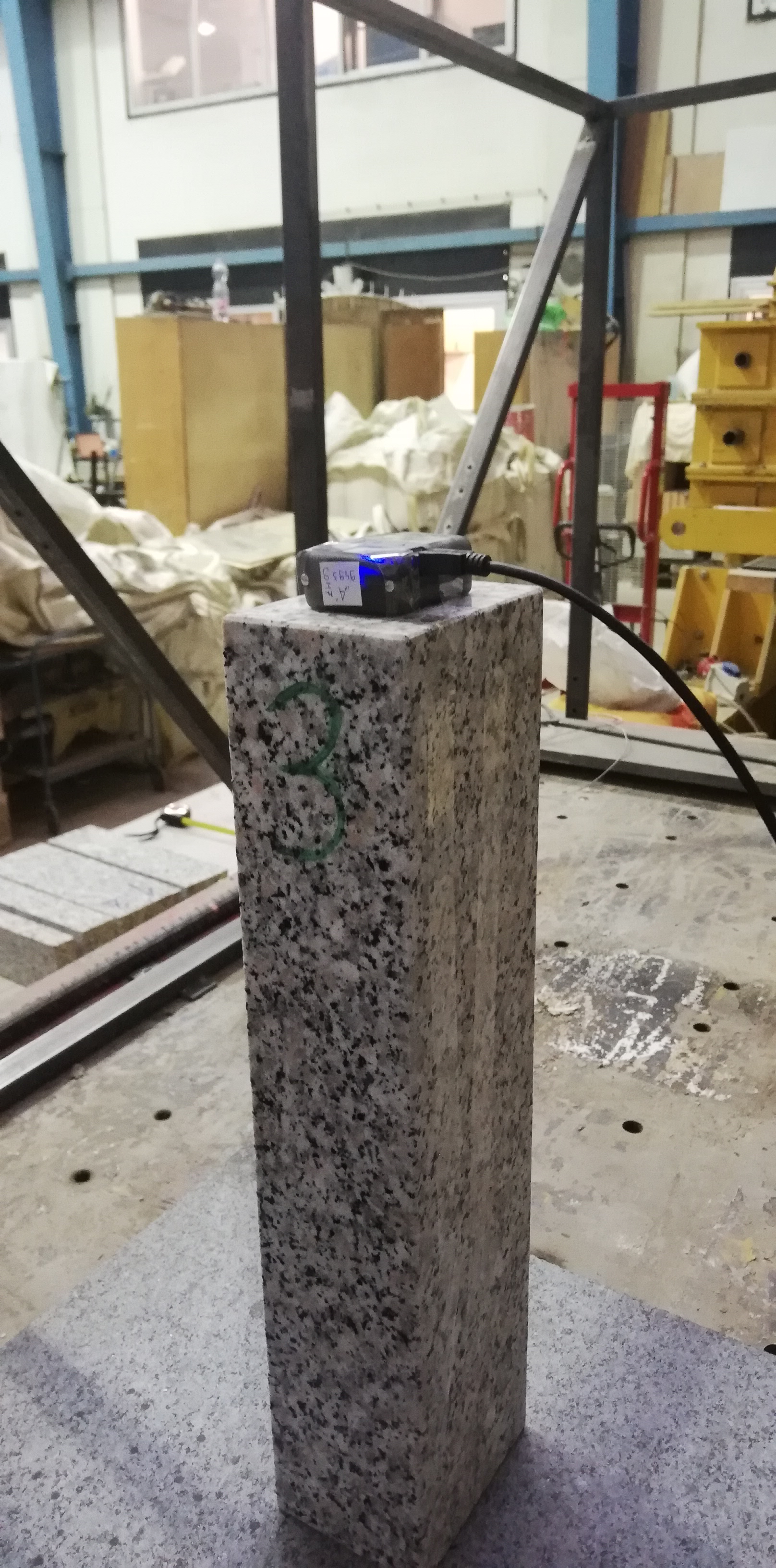
Experimental study of the spatial movement of rocking columns
In my research, I dealt with the dynamics of rigid bodies performing spatial rocking motion. Rocking systems can be found as elements of masonry structures (columns, arches, walls), as an innovative earthquake protection structure (rocking stiffening walls), or in the case of tanks, machines and vehicles moving during earthquakes.
The inplane rocking movement of a block is described by George W. Housner in 1963. [1.] The rocking body turns around one corner during movement and then rises around the corner of the other after an impact. If this impact is completely inflexible and the body does not slip at the moment of impact, the angular velocity after impact can be calculated based on the conservation of angular momentum. Using this impact-number introduced by Housner, many researchers have developed numerical methods to determine the response of rocking systems to horizontal excitation, such as earthquakes. However, experimental experience has shown that even in a single rocking element, the amount of energy dissipated during collisions is less than the value predicted by Housner. This difference may be due to unevenness of the contact surfaces [2] and the fact that motion never occurs perfectly in a plane.
For the past year, I’ve been investigating this phenomenon in the case of rocking blocks of rock in 3D. We conducted a series of laboratory experiments in which spatial rocking motion of rectangular columns of the same height but different aspect ratios were recorded. We made comparisons between the recorded data and the calculations based on the dynamics of the inplane motion, and for each different aspect ratio, we determined how much the spatiality of the motion affects its course. For experimental data collection, we used the X-IMU instrument with sensor fusion, and the evaluation was carried out with our own developed MatLab program.
[1] Housner G. The behavior of inverted pendulum structures during earthquakes. Bull Seismol Soc Am. 1963;53(2):403‐417.
[2] Ther T, Kollár LP. Refinement of Housner’s model on rocking blocks. Bull Earthq Eng. 2017;15(5):2305‐2319. https://doi.org/10.1007/s10518-016-0048-8